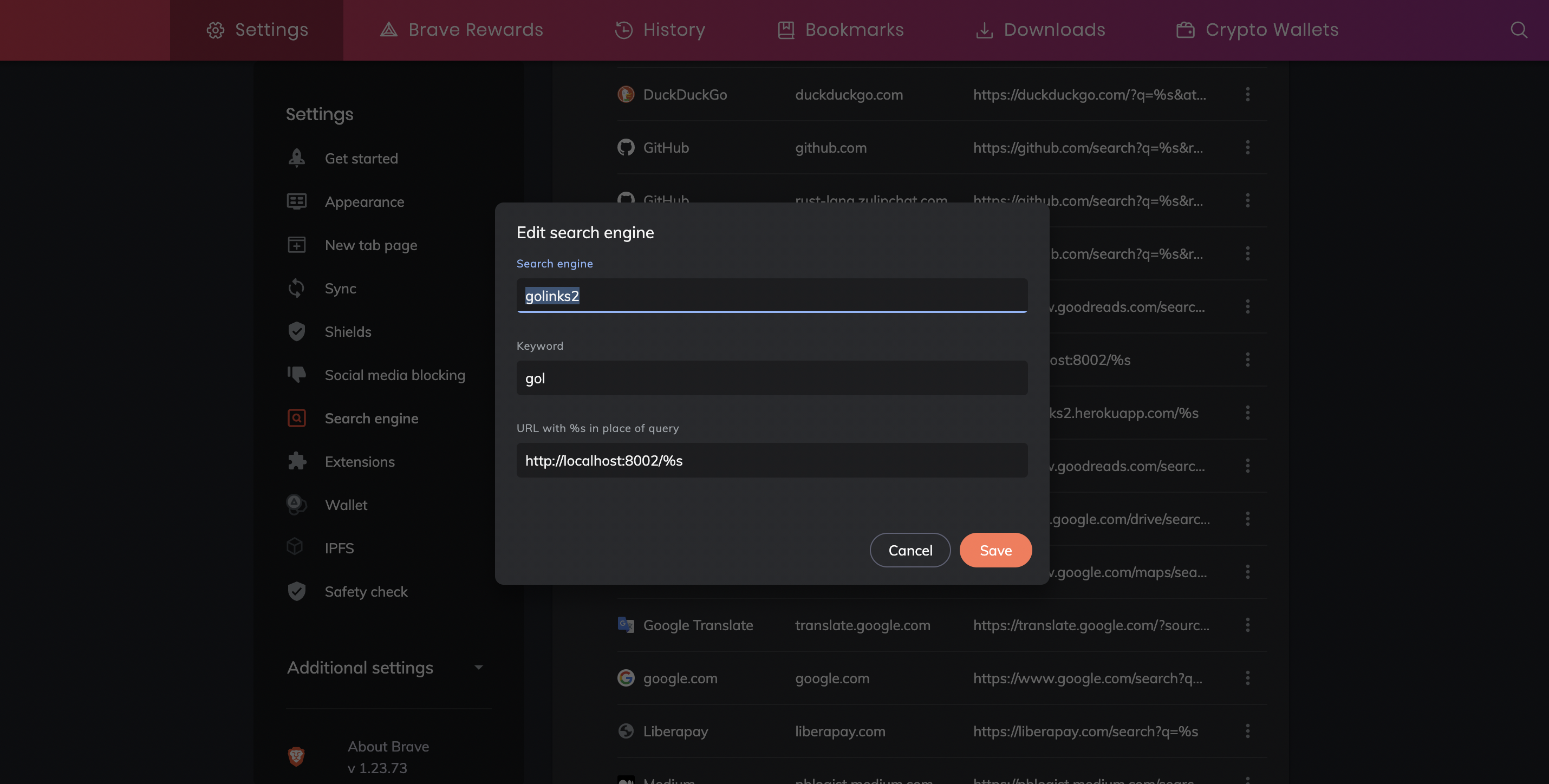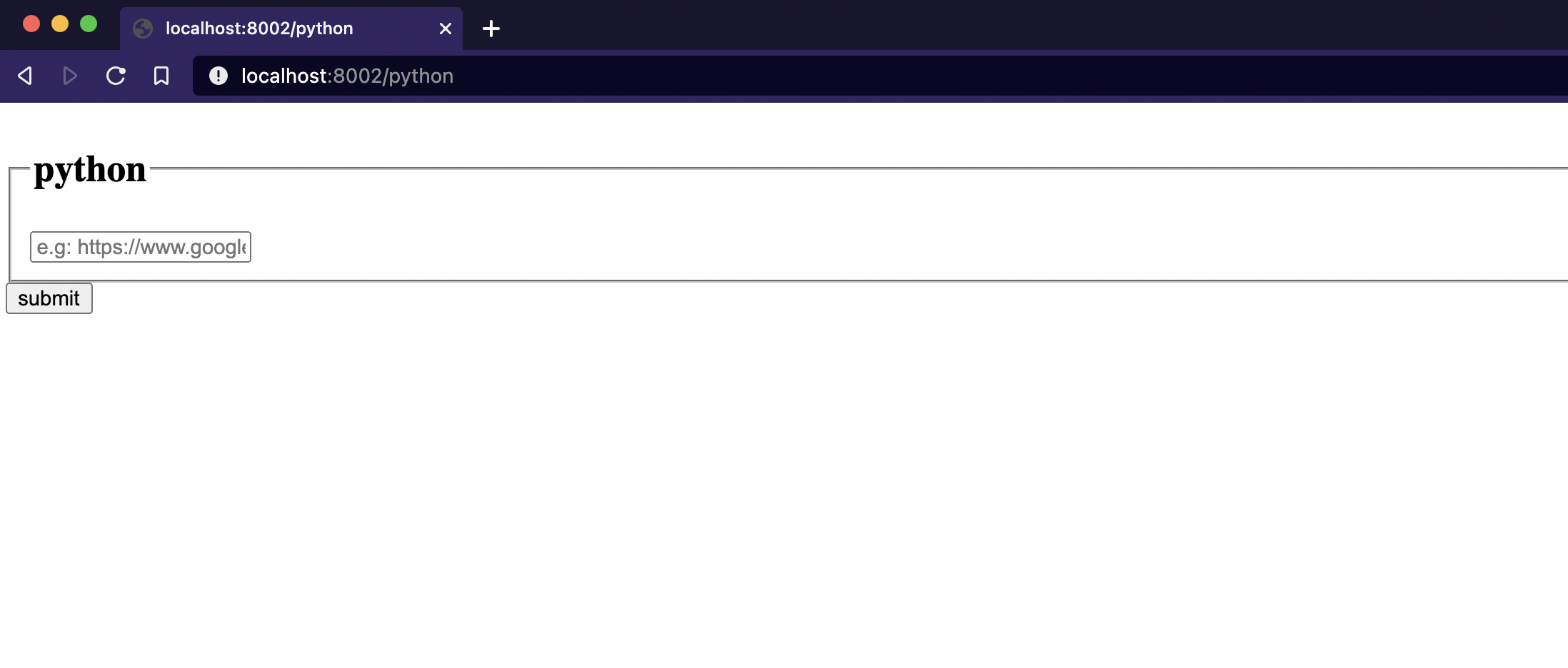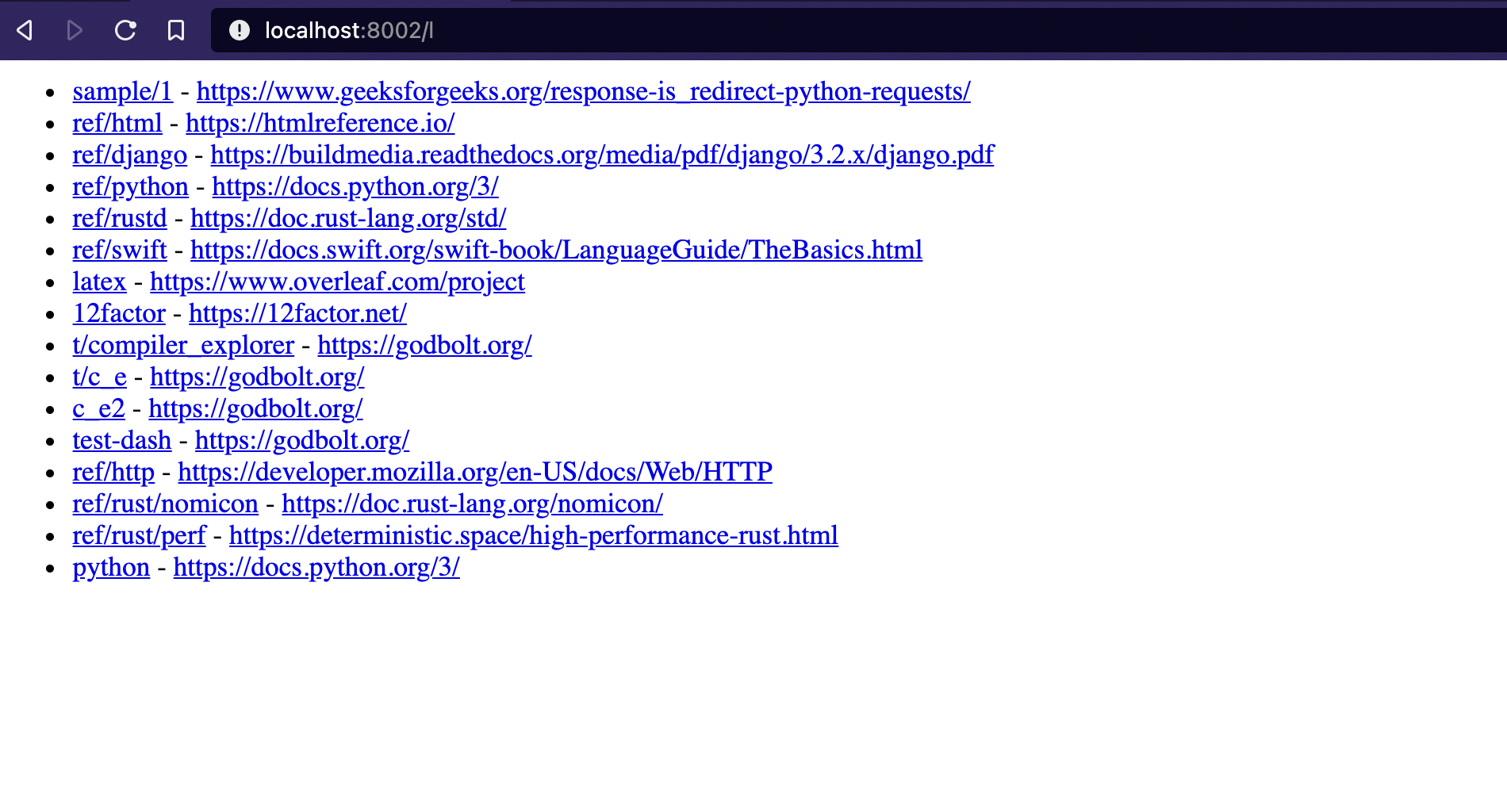Browsers have gone through tremendous change in the last dozens of years. However, the bookmarks UX continues to remain a painpoint - it needs too many clicks to get to a particular link and it's difficult to organise them. I love the golinks project and thought that it's a decent project idea to implement while serving as a playground to learn django and other tech. The desired feature set is:
- ✅ ability to save links
- ✅ redirect to a link.
- ✅ list the links.
- search through the available - use webassembly and rust for the search feature.
- ✅ have ability to specify the paths as aliases :
cs/papers/kafkaetc. - ✅ list subdirectories (for example, when you do
go/ref). - edit and delete url.
- ✅ authenticated logins.
- have the bookmarks associated with each user.
- ✅ heirarchy of bookmarks
- install the python requirements:
pip install -r requirements.txt - get a postgres server running. Export the
DATABASE_URLyou want to connect too, for example:
export DATABASE_URL=postgres://golum:sudeepkumar@127.0.0.1:5432/golinks2
- golinks2 serves only authenticated users (in case you host it) and you can create a superuser to login using python's manage.py:
python manage.py createsuperuser
- run the migrations:
python manage.py makemigrations
python manage.py migrate
-
you can use gunicorn to run a local server:
gunicorn golinks2.wsgi. You can also just use django's manage.py For gunicorn, the above command launches on port 8000 by default, you can setPORTenvironment variable for something different. -
For convenience, you should add a search engine shortcut, so if you do something like
go/and press tab, it'll activate golinks2 search.
-
you can then start adding bookmarks. For example, add the python documentation under
go/python
Once added, you can goto the python reference using go/python
-
golinks2 supports directlory like structure for the aliases. For example, you might organise all references under
go/refand list them:
- add logging framework
- sharing the bookmarks or having user groups
- containerize the application
- It can also be extended to have a personal toolkit -
t/is the toolkit subdomain, wherein the subdomains open in an embedded webview. For example:t/epochtakes you to the eopchconverter website in an embedded view. Hence, a "toolkit" - beautify the interface
- setup CI/CD (unit tests) only for the repo
- record search result performance (what rank search result is being selected?)
- avy style navigation when listing bookmarks in heirarchy
- use webassembly when introducing search
- performance tests
doubts:
- concurrency scenario in django - how are long running tasks handled? Does it block the further API use?
